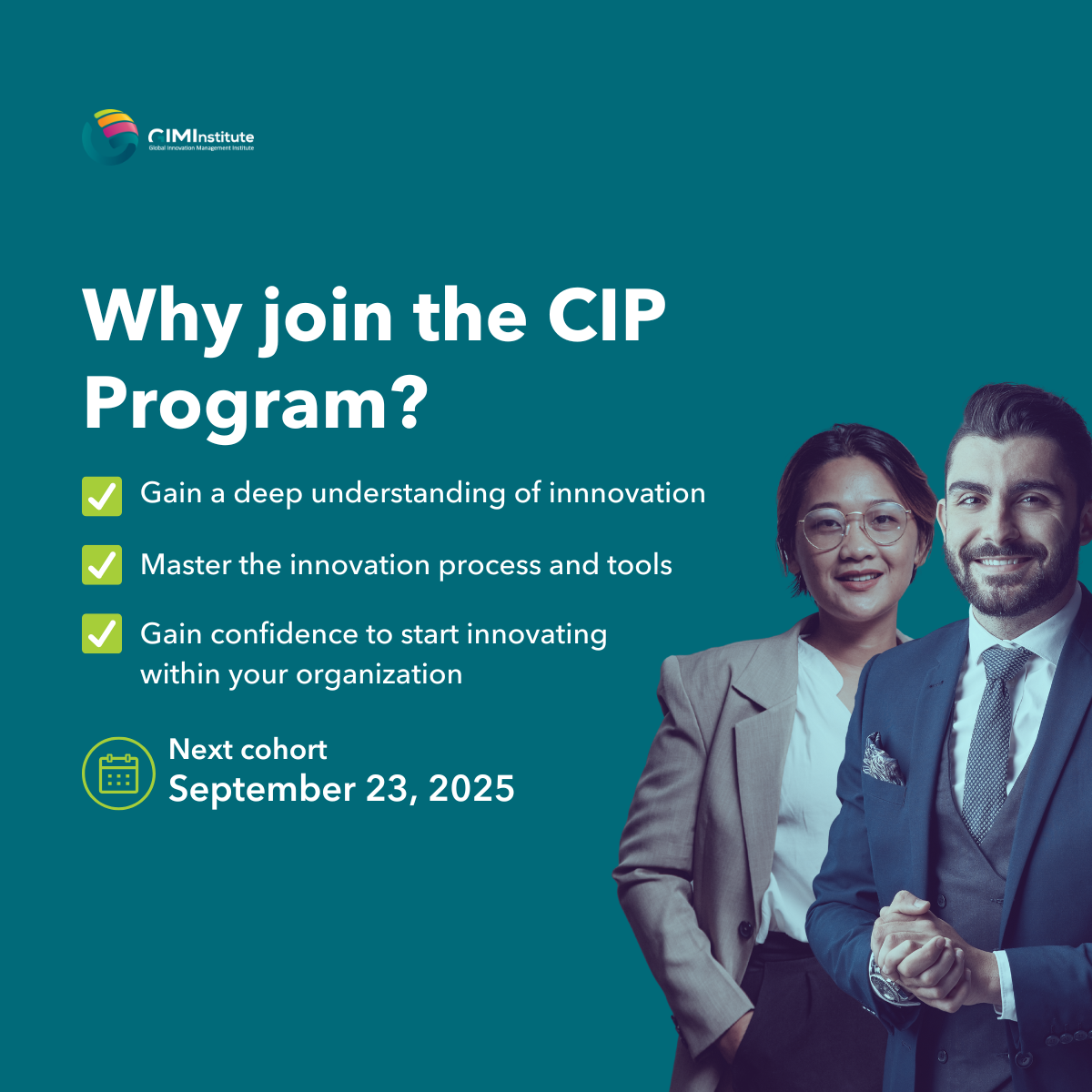Rapid, iterative experimentation process – A ‘Lean Startup-style’ approach to innovation
By: Courtney Wood, Ron Jonash & Mick Simonelli
The emergence of disruptive digital technologies and changing customer expectations has made innovation an imperative for companies to remain sustainably competitive and stimulate growth. Realizing the benefits of innovation requires a systematic approach to not only generating novel ideas but converting them to meaningful business value. Rapid, iterative experimentation is critical to effective conversion in that it helps organizations ‘test the goodness’ of their ideas by turning hypotheses into facts and assumptions into validated conditions, thereby weeding out the bad ideas from the good and turning the good ideas into better, high-impact innovations.While many organizations are able to generate ideas, most are not equipped to conduct ‘Lean Startup-style’ experimentation, that is, they are unable to rapidly create solution prototypes and simulate and test outcomes from a customer, competitor, and partner perspective. We recommend organizations establish a ‘Rapid, Iterative Experimentation Process’ to allow them to quickly improve an innovative idea’s probability of achieving its expected outcomes by generating the information needed to iteratively pivot or remain confident in persevering.
The majority of innovation efforts are unsuccessful
Innovation has become the Holy Grail for executives in the 21st century. The advent of technological changes, such as the digital five forces (mobility and pervasive computing, big data and analytics, social media, cloud, and artificial intelligence and robotics), means that companies need to innovate continuously with agility and efficiency if they are to sustain themselves competitively. However, our numerous client interactions, as well as research from a broad array of sources, indicate that a majority of innovation efforts are unsuccessful. The challenge, more often, is not the generation of creative ideas but their conversion into meaningful innovations that stimulate growth in revenue and profitability. Primary reasons for failure include an inability to rapidly and iteratively experiment, by prototyping new solutions and determining business outcomes through simulation and testing of novel concepts.
Innovation is vital to growth
The emergence of digital technologies has made the current business environment one of the most dynamic in history. Figure 1 depicts the changes due to which most executives around the world have made innovation one of their strategic priorities.

Companies seeking to expand their market share, enter new product or customer segments, or use emerging technologies to create more compelling customer experiences need to generate and launch innovative solutions faster than their competitors. These solutions may include differentiating services, breakthrough business models, or re-imagined business processes. To do this successfully they need to build the capability to continuously ideate, experiment, and monetize their inventive solutions. Innovation, therefore, requires a systematic yet flexible process to handle its associated ambiguity and uncertainty.
Conventional approaches to innovation fail
Many organizations have increased funding and are putting ‘people, processes, and technology’ in place to create their own engines of innovation. However, they struggle with generating enough of the right kind of ideas, and, perhaps more importantly, quickly and effectively converting them into bigger, bolder, faster, and cheaper innovations that drive significant value creation.
A key reason for this failure is the application of traditional product and technology development, as well as large program management methods, to innovation. These methods involve lengthy sequential processes designed to guarantee results. As such, they are too slow for today’s dynamic marketplace and often reject outright and/or strip from the inspired ideas the very essence that could change the game and contribute most to the top and bottom lines, that is, their ‘innovativeness.’ As a result, companies often fail to swiftly monetize their innovations and maximize overall innovation-driven returns.
The need for rapid experimentation
Generating new ideas and converting them into meaningful business value to support competitive sustainability requires a scalable Lean Startup-style approach. One that quickly and cost-effectively identifies the better ideas in the enterprise’s pipeline and evolves them into great innovations that significantly improve business performance. This approach or ‘Rapid Iterative Experimentation Process’ (RIEP – pronounced ‘reap’) involves the use of solution prototyping, concept simulation, and testing (for example, piloting) to assess and improve the potential of the proposed innovations. RIEP can be used to analyze and convert novel concepts along multiple dimensions such as customer attractiveness, market viability, and technical feasibility. By adopting this Lean/Agile and design thinking-based approach to assessing the value expected to be generated by their new ideas, enterprises can ‘learn fast and cheap’ and thereby optimize their overall investment in innovation.
The RIEP solution
RIEP deploys a combination of people, processes, and technology to practice Lean Startup-style experimentation to improve innovation driven business performance. It features a series of activities to generate the insights and information needed by the investors in innovation (for example, the CEO and Business Unit Heads) to make better decisions about whether to ‘pivot, halt, or persevere.’
1) The process begins with identifying the critical value and growth assumptions and risks of the early stage idea or novel concept. These become the hypotheses to prove or disprove using some combination of solution prototyping, concept simulation, and testing. These hypotheses, for example, may relate to the customers’ perceived need for the innovation, the company’s ability to build and monetize the innovation at a reasonable cost, and the competitive response to the innovation’s launch/implementation which affects its sustainability. A major grocery and pharmacy retailer seeking to expand its market into a new community is a case in point. Key hypotheses related to the community’s purchase and use behavior as well as methods to source ‘ambassadors,’ that is members of the local community willing to conduct personal demonstrations relevant to the nutrition, pharmacy, and personal care programs organized by the retailer.
2) After identifying the ‘20 percent of the hypotheses that drive 80 percent of the uncertainty,’ these are broken down into smaller elements (akin to ‘user stories’ in Agile development) around which a detailed experimentation approach and resource plan is drawn up. This experimentation plan typically includes one ‘sprint’ for every element to determine whether that component of the innovative idea as currently envisioned will deliver the expected value. Each sprint lasts one to four weeks and involves a series of ‘value tests’, each taking one to five days. The value tests are designed to deliver the maximum possible data, or insight and information, with the least amount of effort.
3) Some of the sprints may involve solution prototyping to prove technical feasibility and/or to provide the ‘object’ needed to conduct the simulations and tests of the concept’s customer attractiveness and market viability. When IT-driven solution prototyping is used, outputs range from visual mock-ups (for example, PowerPoint presentations) to illustrative software (such as clickable apps to demonstrate the look and feel of a solution) to working software (including functional programs). IT-driven solution prototyping can incorporate any of the following technologies: UX and mobility extensions, workflow and data flow enhancements, heavy analytics, and enterprise software and hardware integration.
4) Most of the sprints involve simulation and testing focused on one or more of the four general areas related to the innovative concept using different techniques and tools:
For example, when considering a new healthier product segment, a major beverage company used concept simulation to better understand customer purchasing behavior, determine distribution channel response, and assess the likelihood of collaboration and preferred relationships with other key players in the ecosystem.
5) The construct of an innovative concept’s unique experimentation plan determines the composition of the RIEP team required. This may include not only internal but external resources such as customers, value chain partners, innovation providers (for example, emerging technology startups), and other ecosystem players such as competitors. Ideally, all RIEP teams execute their specific experimentation plans using a shared technical platform and process playbook designed for distributed and iterative collaboration. While the composition of every RIEP team varies, common internal roles include those of an ideator, idea sponsor/investor, innovation coach (interface between idea sponsor/investor and RIEP team), rapid prototyping specialists (architects, designers, and developers), concept simulation and testing specialists, and other domain and functional experts.
Keys to success
An efficient and effective RIEP implementation requires individuals with an entrepreneurial mindset and competency in solution prototyping and concept simulation and testing, as well as the technologies and tools to conduct this type of experimentation rapidly and iteratively. Therefore, securing the intellectual support and financial commitment from senior leadership is vital for creating and maintaining the capability to maximize innovation-driven business performance while optimizing investment.
Skills and experience valuable to building competence in RIEP generally include having worked for a startup, incubator, or accelerator. For rapid prototyping of IT-driven solutions, competence in Agile development, digital and emerging technology, design thinking, and UX/UI design would be instrumental. For concept simulation and testing, a background in new venture development, business strategy formulation, innovation marketing, market analysis, Lean/Six Sigma, critical thinking, business case development, implementation planning, creativity facilitation and gamification, and role-playing would be very useful.
For the technical platform, solutions to enable rapid prototyping of the ‘touch, feel, and works like’ of the innovative concept are many. The goal is to know which solution to apply when. In addition, using free (for example, Open Source) solutions and provisioning on demand as much as possible, particularly in the early days of establishing an RIEP capability, as the patterns of the enterprise’s innovative idea prototyping needs emerge, is an important consideration.
Realizing value through effective innovation
Whether an organization employs their own RIEP capability or engages a trusted provider with the required competencies and infrastructure, it can expect significant increases in the quality and speed of input for decision making on innovation investments. This in turn will lead to higher returns from their new and novel ideas and business concepts. In particular, enterprises can expect higher innovation performance in the form of revenue growth, increased customer satisfaction, profitability enhancement, shareholder value creation, and ultimately optimized innovation investment.
About the Authors
Courtney Wood
Director, TCS Innovation Management Services
Courtney Wood leads the Innovation Management Services capability at Tata Consultancy Services (TCS). Courtney has spent 25 years in management consulting, supporting both large and early stage enterprises in establishing high-performing growth and profitability engines by developing the right business strategies as well as designing the right business capabilities and executional roadmaps to remain market relevant and fiscally viable in an ever more dynamic and complex world. During the ‘dot com days,’ Courtney was co-founder and chief strategist of a technology-based business incubator that brought promising start-ups into its nest, exchanging new venture development capability for equity.
Ron Jonash
Director and Senior Partner, IXL Center
Ron is a senior partner at the Center for Innovation, Excellence, and Leadership (IXL Center) and leads its innovation management practice. He is on the faculty of the Hult International Business School and the Tufts University School of Engineering, and is a partner at a venture capital firm. He is also chairman of the Board of the Global Innovation Management Institute, which establishes standards and provides professional certification for both innovation practitioners and managers. He was previously the founder and managing director of the Innovation Practice at the Monitor Group, and before that was head of Arthur D. Little’s Technology and Innovation Management Practice for over 20 years. Ron is author of the award winning book, The Innovation Premium, as well as numerous other innovation books and articles.
Mick Simonelli
Innovation Consultant
Mick is a thought leader on innovation in financial services. He is the former lead innovation executive for USAA, a Fortune 50 Insurance and Banking company, where he built and led their program to best-in-class status. Prior to USAA, he was an innovation and transformation officer for the U.S. Department of Defense.


